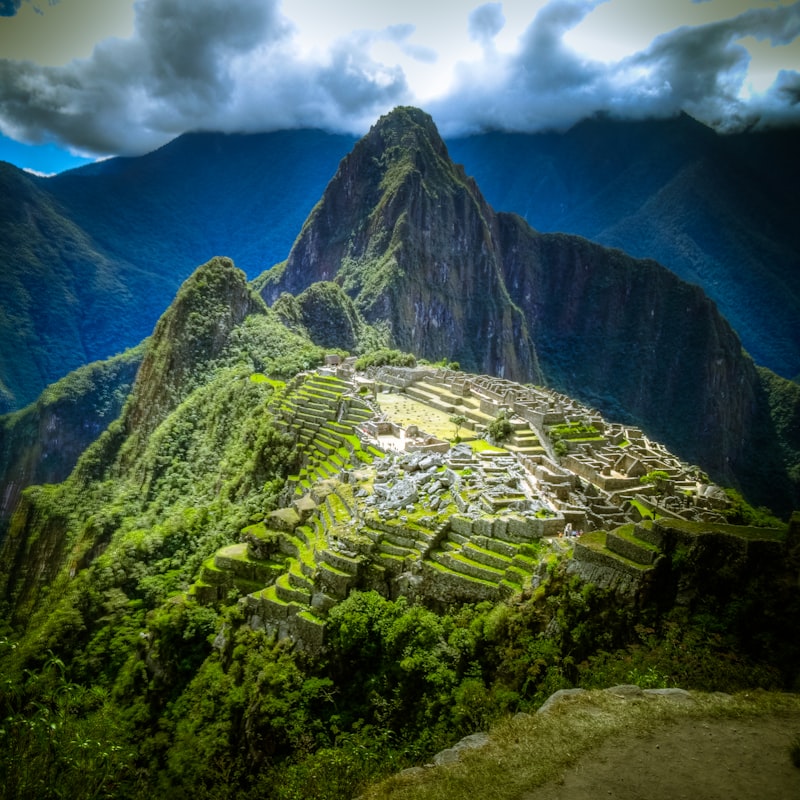One of the most iconic landmarks in Jerusalem is the Western Wall, also known as the Wailing Wall. This ancient limestone wall is a remnant of the Second Temple, a place of profound significance for Jewish worshipers who come here to pray and leave handwritten notes in its crevices. The atmosphere is palpably reverent, resonating with centuries of prayers and hopes.
Nearby stands the Dome of the Rock, an architectural marvel that gleams with golden hues against the Jerusalem skyline. This Islamic shrine is built over the Foundation Stone, believed to be where Prophet Muhammad ascended to heaven. Its intricate mosaics and imposing dome make it a symbol of Jerusalem’s religious diversity and historical importance.
A stroll through the Old City reveals further treasures, such as the Church of the Holy Sepulchre. This sacred site is revered by Christians as the place where Jesus was crucified, buried, and resurrected. Pilgrims from around the world visit this ancient church to walk the Via Dolorosa, the path Jesus is said to have taken on the way to his crucifixion.
Beyond its religious significance, Jerusalem is also home to the Tower of David, a citadel that has guarded the city for centuries. Today, it houses a museum that chronicles Jerusalem’s history through archaeological findings and multimedia exhibits. From its ramparts, visitors can enjoy panoramic views of the Old City and beyond, offering a perspective that spans millennia.
Unveiling the Secrets of Jerusalem’s Ancient Walls and Gates
The Damascus Gate, known locally as Bab al-Amud, welcomes visitors with its grand arches and bustling market nearby. It’s not just an entrance but a portal to Jerusalem’s vibrant soul, where cultures converge and history unfolds. Standing here, you can feel the pulse of the city, a blend of old and new, echoing through time.
Moving to the Jaffa Gate, or Bab al-Khalil, you encounter a different atmosphere. Named after the port it faces, this gate offers a glimpse into Jerusalem’s strategic past. It served as a key entry point for pilgrims and armies alike, its towering walls a testament to the city’s fortitude against countless sieges and conquests.


Further along, the Zion Gate, or Bab al-Nabi Dawud, stands quietly in the shadow of Mount Zion. This gate holds poignant memories, as it once led to the Jewish Quarter and witnessed fierce battles during the 1948 War of Independence. Today, it remains a symbol of resilience and renewal, bridging ancient traditions with modern aspirations.
Each gate in Jerusalem weaves a narrative of resilience and renewal, a testament to the enduring spirit of its people. As you explore these ancient walls, you uncover layers of history etched in stone, stories waiting to be heard and shared. They remind us that Jerusalem is more than just a city; it is a living testament to the strength of the human spirit and the power of cultural heritage.
Exploring the Sacred Grounds: Jerusalem’s Holiest Sites
Jerusalem, a city steeped in history and spirituality, beckons travelers from around the globe to explore its holiest sites. Imagine walking through streets where ancient tales intertwine with modern faith, each corner revealing a story of profound significance. Here, history isn’t just preserved; it pulsates through the cobblestones and whispers through the walls of sacred monuments.
The Western Wall, or Kotel in Hebrew, stands as a timeless symbol of Jewish heritage and resilience. As you approach, the enormity of its stone blocks, weathered by centuries of prayers and tears, evokes a sense of awe. This is where pilgrims gather to press handwritten notes into its cracks, each a heartfelt plea or gratitude to the divine.
The Church of the Holy Sepulchre, nestled in the heart of the Old City, is revered as Christianity’s most sacred site. Step inside, and you’re enveloped in a labyrinth of chapels, each marking a significant event in Jesus Christ’s crucifixion, burial, and resurrection. Here, the air is heavy with incense, and the light dances through stained glass, inviting contemplation and reverence.
The Dome of the Rock, with its iconic golden dome shimmering against the Jerusalem skyline, holds profound significance for Muslims worldwide. Built upon the site where Prophet Muhammad ascended to heaven, it stands as a testament to faith and architectural marvel. Its intricate mosaics and marble pillars tell a story of cultural fusion and religious devotion.
Beyond these renowned landmarks, Jerusalem’s streets teem with lesser-known yet equally captivating sites. From the serene Mount of Olives, offering panoramic views of the city, to the bustling souks of the Arab Quarter, where spices mingle with the aroma of freshly baked bread, every corner offers a glimpse into Jerusalem’s diverse tapestry.
Whether you’re drawn by faith, history, or simply a desire to immerse yourself in a cultural crossroads, Jerusalem’s holiest sites promise an unforgettable journey. Each stone, each prayer, resonates with the footsteps of pilgrims past and present, creating an experience that transcends time and leaves an indelible mark on the soul.
Jerusalem’s Treasures: Archaeological Wonders Revealed
Have you ever wondered what secrets lie beneath the ancient streets of Jerusalem? Prepare to be amazed as we delve into the archaeological wonders that have been unearthed in this historic city. Jerusalem, often revered as a place of immense religious significance, holds a wealth of treasures that tell tales of civilizations long past.
One of the most breathtaking discoveries in Jerusalem is the City of David, a site that dates back over 3,000 years. Imagine walking through narrow passageways and uncovering remnants of dwellings, water systems, and fortifications from the time of King David himself. It’s like stepping back in time, where every stone has a story to tell about the daily life and struggles of ancient inhabitants.
Not far from the City of David lies the Western Wall, or Kotel in Hebrew, a revered site for Jewish worship and pilgrimage. Beneath its towering presence, recent excavations have revealed layers of history spanning millennia. From the grandeur of Herod’s temple complex to the humble homes of Jerusalem’s earliest residents, each layer unearthed adds another chapter to the city’s rich tapestry of history.
Venture further beneath the surface, and you’ll discover the intricate network of tunnels and cisterns that kept ancient Jerusalem thriving even during times of siege. These engineering marvels not only provided essential water sources but also served as strategic defense mechanisms against invaders. Walking through these passages, one can’t help but marvel at the ingenuity and craftsmanship of civilizations past.
The archaeological sites in Jerusalem are not merely relics of the past but windows into the cultural, religious, and technological achievements of humanity. They remind us that beneath the bustling modern city lies a hidden world waiting to be explored and understood. Whether you’re a history enthusiast, a spiritual pilgrim, or simply curious about the origins of civilization, Jerusalem’s archaeological wonders offer a journey unlike any other.
Prepare to be captivated as you uncover Jerusalem’s treasures, where every stone tells a story and every excavation reveals a new piece of the puzzle that is the history of this extraordinary city.
A Journey Through Time: Discovering Jerusalem’s Historic Neighborhoods
Jerusalem, a city steeped in history and culture, offers a mesmerizing journey through its historic neighborhoods. Each corner tells a story, weaving together ancient tales with modern life. Walking through these streets is like stepping into a time machine, where every cobblestone whispers secrets of generations past.
One of the most enchanting neighborhoods is the Old City, a UNESCO World Heritage site divided into four quarters: Jewish, Christian, Muslim, and Armenian. Here, narrow alleys lead to sacred sites such as the Western Wall, Church of the Holy Sepulchre, and Dome of the Rock. The blend of architecture reflects centuries of religious and cultural diversity, offering visitors a glimpse into Jerusalem’s spiritual heart.
Venturing beyond the Old City, neighborhoods like Ein Karem and Mea Shearim showcase Jerusalem’s rich tapestry of traditions. Ein Karem, known as the birthplace of John the Baptist, is a serene enclave adorned with churches and artists’ studios. Its tranquil atmosphere invites contemplation and artistic inspiration.
In contrast, Mea Shearim is a window into traditional Jewish life, where ancient customs and dress endure. Visitors can witness daily rituals unchanged for generations, fostering a sense of continuity and community unique to Jerusalem.
For a taste of Jerusalem’s cosmopolitan side, neighborhoods like Mamilla and Yemin Moshe offer vibrant markets, upscale boutiques, and trendy cafes. These areas blend the city’s historical charm with contemporary flair, attracting locals and tourists alike.
As you wander through Jerusalem’s historic neighborhoods, you’ll find yourself immersed in a mosaic of cultures, religions, and stories. Each street corner reveals layers of history waiting to be discovered, making every step a journey through time.
From Temple Mount to the Western Wall: Icons of Jerusalem’s History
Imagine stepping into a realm where time unravels layers of history with every step you take. Jerusalem, a city etched in the annals of human civilization, holds within its ancient walls stories that have shaped the course of religions and empires alike. At the heart of this historic tapestry lie two iconic landmarks: the Temple Mount and the Western Wall.
The Temple Mount, often hailed as the most contested religious site in the world, stands as a testament to Jerusalem’s spiritual significance. Here, the ruins of the Second Jewish Temple, destroyed centuries ago, echo with the prayers of millions who journey here seeking solace and connection. It’s not just a site but a place where faith converges with history, where pilgrims and tourists alike gaze upon remnants that date back millennia.
As you traverse the cobbled streets leading from the Temple Mount, you encounter the Western Wall, also known as the Wailing Wall. This towering remnant of the ancient Jewish temple complex serves as a poignant symbol of resilience and devotion. For centuries, it has been a site of Jewish prayer and pilgrimage, where people from all corners of the globe come to place their hopes and dreams within its weathered stones.
The Western Wall isn’t merely a physical barrier; it stands as a bridge between the past and the present, a conduit through which the spirit of Jerusalem’s history flows. Its towering presence evokes a sense of wonder and reverence, a reminder of the enduring power of faith and community.
Together, these landmarks encapsulate Jerusalem’s rich tapestry of history, offering visitors a glimpse into the city’s tumultuous yet vibrant past. They beckon travelers to ponder the stories etched into their stones, to contemplate the legacies they carry, and to marvel at the enduring spirit of a city that has witnessed the rise and fall of civilizations.
In Jerusalem, every corner holds a piece of history waiting to be discovered. From the grandeur of the Temple Mount to the solemnity of the Western Wall, these icons stand as sentinels of a city that continues to captivate hearts and minds alike, beckoning all who visit to delve deeper into its storied past.
Hidden Gems: Lesser-Known Historic Sites in Jerusalem
One such gem is the Tower of David Museum, not merely a museum but a living testimony to Jerusalem’s layered history. Situated near the Jaffa Gate, this ancient citadel has witnessed the rise and fall of empires, from King Herod’s reign to Ottoman rule. Visitors can explore its ramparts, offering panoramic views of the Old City, and delve into exhibits that chronicle Jerusalem’s evolution through artifacts and multimedia displays.
Nearby, tucked away in the Armenian Quarter, lies the Cathedral of St. James. This 12th-century church, adorned with intricate frescoes and mosaics, is a testament to Jerusalem’s Christian heritage. It serves as the principal church of the Armenian Patriarchate of Jerusalem and remains a spiritual haven amidst the bustling streets.
Venture further into the heart of the Jewish Quarter to discover the Herodian Quarter. Buried beneath layers of time, this archaeological site reveals the lavish lifestyle of Jerusalem’s elite during the Second Temple period. Wander through ancient homes, adorned with exquisite mosaics and frescoes, offering a glimpse into daily life over two millennia ago.
For those intrigued by Islamic history, the Mamilla Cemetery offers a serene retreat. This historic burial ground predates the Ottoman era and houses the tombs of prominent figures from Jerusalem’s Muslim community. Stroll through its shaded alleys, where time seems to stand still amidst centuries-old tombstones and lush greenery.
While Jerusalem’s iconic landmarks draw millions, these hidden gems offer a deeper, more intimate connection to the city’s diverse history and cultural tapestry. Each site, with its stories etched in stone and memory, invites visitors to uncover the lesser-known chapters of Jerusalem’s past, weaving together a narrative that spans continents and centuries.
Walking in the Footsteps of Kings: Jerusalem’s Royal Palaces
Jerusalem, a city steeped in millennia of history, holds within its walls the remnants of several royal palaces. Each palace tells a story of ambition, wealth, and the desire to leave a lasting mark on the annals of time. Imagine wandering through halls adorned with intricate mosaics, where every stone whispers tales of conquests and alliances.

One of the most renowned palaces is the Palace of King David, believed to have been built by the legendary King David himself. This site is not just a historical landmark but a symbol of Jerusalem’s importance as a center of power since ancient times. Walking through its ruins, one can almost feel the presence of the kings and queens who once walked these very corridors.
Another notable palace is the Herodian Quarter, a luxurious complex that dates back to the time of King Herod the Great. Known for its innovative design and lavish decorations, this palace complex showcases the architectural prowess of its builders and the extravagance enjoyed by the ruling elite.
As you explore these ancient palaces, you can’t help but marvel at the engineering feats achieved without modern technology. How did they transport massive stones to build these grand structures? What stories do the intricate frescoes on the walls tell about daily life in the courts of ancient Jerusalem?
Frequently Asked Questions
Are there guided tours available for Jerusalem’s historic sites?
Discover guided tours for Jerusalem’s historic sites to enrich your visit with expert insights and historical context.
How old are the ancient sites in Jerusalem?
Discover the ages of ancient sites in Jerusalem with our concise FAQ. Gain clear insights into the historical timelines of Jerusalem’s landmarks, from the millennia-old walls of the Old City to revered religious sites like the Western Wall and the Dome of the Rock. Explore the rich tapestry of Jerusalem’s history through the ages.
What religious significance do Jerusalem’s historic sites hold?
Discover the religious significance of Jerusalem’s historic sites through a concise exploration of their cultural and spiritual importance.
What are the must-visit historic sites in Jerusalem?
Discover the essential historic sites of Jerusalem with our guide to must-visit locations. Explore ancient landmarks like the Western Wall, Dome of the Rock, and Church of the Holy Sepulchre, each offering rich historical significance and cultural heritage. Plan your journey through Jerusalem’s storied past with our curated list of iconic destinations.
How can I best plan a visit to Jerusalem’s historic sites?
Learn how to efficiently plan your visit to Jerusalem’s historic sites with this concise guide. Discover key attractions, recommended itineraries, transportation tips, and cultural insights to make the most of your trip.


